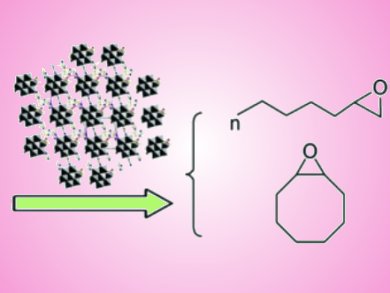Epoxides are used to make a variety of materials, notably epoxy resins and polymers. The epoxidation of olefins is a convenient way to form epoxides; polyoxometalates (POMs) are efficient catalysts for this process. Most POM-based epoxidation catalysts are homogeneous. Industrially, heterogeneous catalysts are preferable due to the ease of separation and recovery of the catalysts, and their ability to be used in flow bed reactors.
Mingjun Jia and co-workers, Jilin University, China, have developed a POM series of octamolybdate clusters modified by N-heterocyclic ligands. The clusters self-assembled into supramolecular structures by linking with imidazolium cations and water molecules. This gave a range of solids with high catalytic activity in the epoxidation of olefins with tert-butyl hydroperoxide. They were also stable against leaching, making them suitable for heterogeneous catalysis.
- Supramolecular Assemblies Directed by Hydrogen Bonds and π–π Interactions and Based on N-Heterocyclic-Ligand-Modified β-Octamolybdate – Structure and Catalytic Application in Olefin Epoxidation
J. Du, J. Yu, J. Tang, J. Wang, W. Zhang, W. R. Thiel, M. Jia,
Eur. J. Inorg. Chem. 2011.
DOI: 10.1002/ejic.201100249




